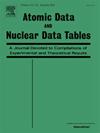在解决独特的程式设计习题中,学生活动的异常侦测:有动机的学生对抗可疑的学生
IF 2.7
3区 物理与天体物理
Q2 PHYSICS, ATOMIC, MOLECULAR & CHEMICAL
引用次数: 1
摘要
本文介绍了一个数据集,其中包含来自数字教学助理(DTA)系统的消息,该系统记录了学生对11种不同类型的独特编程练习的解决方案的自动验证结果。这些结果是由系统自动生成的,该系统自动化了MIREA -俄罗斯技术大学(RTU MIREA)的大型Python编程课程。DTA系统被训练来区分解决编程练习的方法,以及识别正确和不正确的解决方案,使用智能算法负责分析DTA系统中的源代码,使用基于马尔可夫链的程序的向量表示,计算程序的两两Jensen-Shannon距离,并使用分层聚类算法来检测学生在解决独特编程练习中使用的高级方法。在学习过程中,每个学生必须正确解决11道独特的习题,才能以考试的形式获得中级证书的入学资格。此外,一个积极的学生可能会尝试找到更多的方法来解决他们已经解决的问题。同时,并不是所有的学生都能够或愿意解决这11个独特的问题;有些人会求助于外部帮助来解决全部或部分练习。由于记录了学生与DTA系统交互的所有信息,因此可以识别不同类型的学生。首先,学生可以分为两类:未解决11道习题的学生和以考试的形式获得中级证书的学生,正确解决了11道独特的习题。然而,基于提议的数据集,在后一组中可以识别出典型的、有动机的和可疑的学生类别。提出的数据集可用于开发回归模型,预测学生与DTA系统交互时的活动爆发,解决聚类问题,识别学习过程中具有相似行为模型的学生群体,并开发智能数据分类器,预测学生的行为模型并得出适当的结论,不仅在学习过程结束时,而且在学习过程中,以激励所有学生。即使是那些被归类为可疑的人,也要使用各种工具将学习过程的结果可视化。本文章由计算机程序翻译,如有差异,请以英文原文为准。
Anomaly Detection in Student Activity in Solving Unique Programming Exercises: Motivated Students against Suspicious Ones
This article presents a dataset containing messages from the Digital Teaching Assistant (DTA) system, which records the results from the automatic verification of students’ solutions to unique programming exercises of 11 various types. These results are automatically generated by the system, which automates a massive Python programming course at MIREA—Russian Technological University (RTU MIREA). The DTA system is trained to distinguish between approaches to solve programming exercises, as well as to identify correct and incorrect solutions, using intelligent algorithms responsible for analyzing the source code in the DTA system using vector representations of programs based on Markov chains, calculating pairwise Jensen–Shannon distances for programs and using a hierarchical clustering algorithm to detect high-level approaches used by students in solving unique programming exercises. In the process of learning, each student must correctly solve 11 unique exercises in order to receive admission to the intermediate certification in the form of a test. In addition, a motivated student may try to find additional approaches to solve exercises they have already solved. At the same time, not all students are able or willing to solve the 11 unique exercises proposed to them; some will resort to outside help in solving all or part of the exercises. Since all information about the interactions of the students with the DTA system is recorded, it is possible to identify different types of students. First of all, the students can be classified into 2 classes: those who failed to solve 11 exercises and those who received admission to the intermediate certification in the form of a test, having solved the 11 unique exercises correctly. However, it is possible to identify classes of typical, motivated and suspicious students among the latter group based on the proposed dataset. The proposed dataset can be used to develop regression models that will predict outbursts of student activity when interacting with the DTA system, to solve clustering problems, to identify groups of students with a similar behavior model in the learning process and to develop intelligent data classifiers that predict the students’ behavior model and draw appropriate conclusions, not only at the end of the learning process but also during the course of it in order to motivate all students, even those who are classified as suspicious, to visualize the results of the learning process using various tools.
求助全文
通过发布文献求助,成功后即可免费获取论文全文。
去求助
来源期刊

Atomic Data and Nuclear Data Tables
物理-物理:核物理
CiteScore
4.50
自引率
11.10%
发文量
27
审稿时长
47 days
期刊介绍:
Atomic Data and Nuclear Data Tables presents compilations of experimental and theoretical information in atomic physics, nuclear physics, and closely related fields. The journal is devoted to the publication of tables and graphs of general usefulness to researchers in both basic and applied areas. Extensive ... click here for full Aims & Scope
Atomic Data and Nuclear Data Tables presents compilations of experimental and theoretical information in atomic physics, nuclear physics, and closely related fields. The journal is devoted to the publication of tables and graphs of general usefulness to researchers in both basic and applied areas. Extensive and comprehensive compilations of experimental and theoretical results are featured.
 求助内容:
求助内容: 应助结果提醒方式:
应助结果提醒方式:


